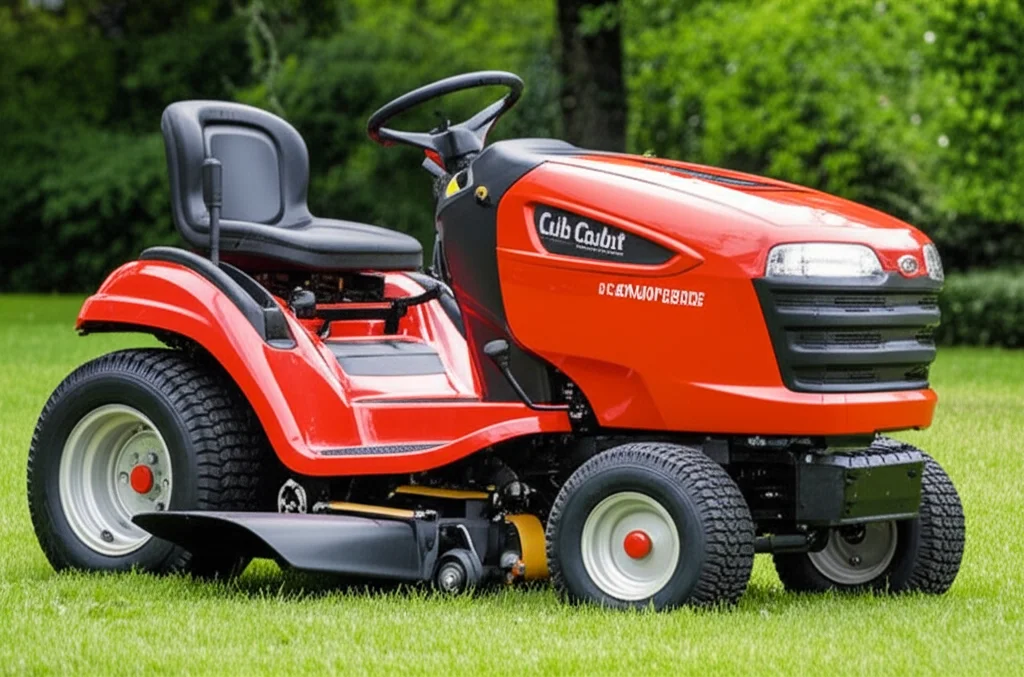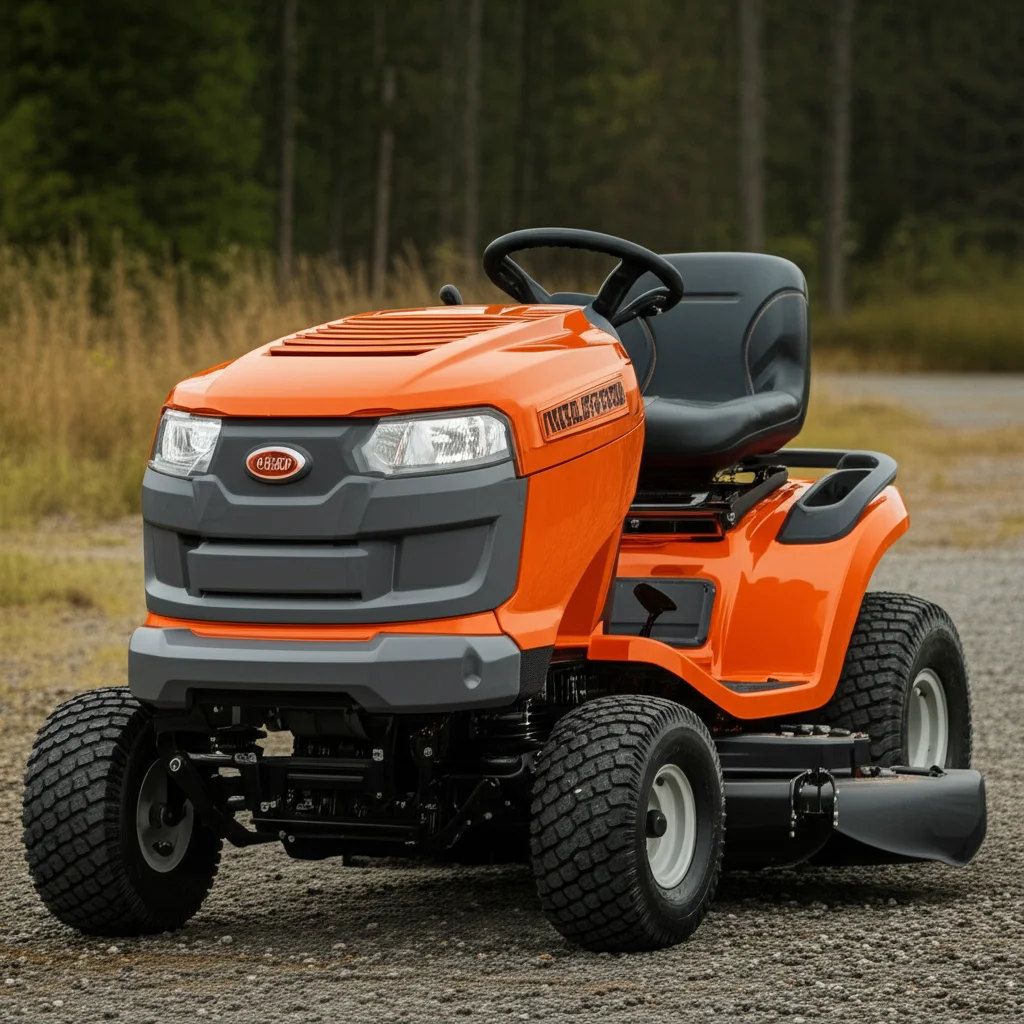· Lawn Mower Repair · 11 min read
Cub Cadet Ltx 1040 Problems

Key Takeaways:
- Most common Cub Cadet LTX 1040 problems include transmission failures, starting issues, and steering difficulties
- Regular maintenance can prevent many common problems
- Many issues can be solved with basic troubleshooting before seeking professional help
- Battery and electrical system problems often cause starting failures
- The LTX 1040 typically lasts 8-10 years with proper care and maintenance
The Cub Cadet LTX 1040 is a popular riding lawn mower known for its durability and performance, but like any mechanical equipment, it can experience problems over time. Common issues include transmission failures, starting problems, steering difficulties, and engine performance issues that can affect its operation and longevity.
Common Cub Cadet LTX 1040 Problems and Their Solutions
The Cub Cadet LTX 1040 has earned a reputation as a reliable lawn tractor for residential use, but owners frequently encounter several recurring issues. Understanding these problems can help you diagnose and fix issues quickly, potentially saving hundreds in repair costs and extending your mower’s lifespan.
Transmission Problems
Transmission issues rank among the most frequently reported problems with the Cub Cadet LTX 1040. Many owners notice their mower slowing down or struggling to move uphill - clear signs of transmission trouble.
The most common transmission problems include:
- Hydrostatic transmission failure: This typically manifests as difficulty moving forward or backward
- Belt issues: Worn or damaged belts can cause slipping and reduced power
- Low transmission fluid: This can lead to overheating and eventual transmission damage
- Contaminated fluid: Dirt or debris in the transmission system affects performance
To troubleshoot transmission problems:
- Check the transmission fluid level and condition
- Inspect the drive belt for wear, proper tension, and alignment
- Clean cooling fins on the transmission to prevent overheating
- Listen for unusual noises when shifting gears, which often indicate internal damage
Many owners report that replacing the transmission drive belt resolves movement issues. For the LTX 1040, using the manufacturer-recommended belt is crucial for optimal performance. If your mower won’t move forward or backward, inspect the bypass lever position, as it might be accidentally engaged.
Starting Problems
Another frequent complaint among Cub Cadet LTX 1040 owners relates to starting difficulties. Few things are more frustrating than planning to mow your lawn only to find your mower won’t start.
Common starting issues include:
- Dead or weak battery: The most common cause of starting problems
- Faulty ignition switch: Prevents electrical current from reaching the starter
- Clogged fuel filter: Restricts fuel flow to the engine
- Dirty carburetor: Prevents proper fuel-air mixture
- Faulty starter solenoid: Fails to engage the starter motor
When your LTX 1040 won’t start:
- Check battery voltage with a multimeter (should read 12+ volts)
- Inspect and clean battery terminals to ensure good connections
- Test the ignition switch for continuity
- Replace the fuel filter if it hasn’t been changed recently
- Clean the carburetor or have it professionally serviced
Many starting problems are battery-related and can be solved by replacing an old battery. Cub Cadet batteries typically last 3-5 years depending on usage and maintenance. A battery that’s more than 3 years old is often the culprit when starting issues begin.
Steering Problems
Steering difficulties are another common complaint with the Cub Cadet LTX 1040. These issues can make the mower difficult to control and potentially dangerous to operate.
Typical steering problems include:
- Loose steering components: Creates excessive play in the steering wheel
- Worn tie rods or ball joints: Causes wandering or difficulty turning
- Improper tire pressure: Affects handling and steering responsiveness
- Sector gear issues: Leads to inconsistent steering response
To address steering problems:
- Check and adjust tire pressure to recommended levels
- Inspect the steering linkage for loose or worn components
- Examine the sector gear for damage or excessive wear
- Adjust the steering if there’s too much play in the wheel
Many owners report that simply tightening loose components resolves steering issues. The sector gear is a common failure point on the LTX 1040, and replacing this part often fixes steering problems completely.
Engine Performance Issues
Engine problems can significantly impact your Cub Cadet LTX 1040’s performance and potentially lead to complete failure if not addressed promptly.
Common engine issues include:
- Rough running or surging: Often caused by carburetor problems
- Engine dies when blades are engaged: Usually related to PTO clutch or safety switches
- Excessive smoke: Can indicate oil burning or fuel mixture problems
- Loss of power: Often related to air filter or fuel system issues
To troubleshoot engine performance problems:
- Replace the air filter if it’s dirty or clogged
- Check and replace the spark plug if necessary
- Clean or rebuild the carburetor
- Verify proper fuel quality and freshness
- Test safety switches to ensure they’re functioning correctly
Regular engine maintenance, including oil changes every 50 hours of operation, can prevent many performance issues. Using fresh fuel with a fuel stabilizer is especially important if your mower sits unused for extended periods.
Electrical System Problems
The electrical system in the Cub Cadet LTX 1040 controls everything from starting to safety features, and problems here can manifest in various ways.
Typical electrical issues include:
- Blown fuses: Interrupt power to vital components
- Faulty safety switches: Prevent the mower from starting or cause it to shut down unexpectedly
- Wiring damage: Can cause intermittent problems that are difficult to diagnose
- Charging system failures: Result in constantly drained batteries
When dealing with electrical problems:
- Check fuses for continuity and replace any that are blown
- Test safety switches including the seat, brake, and PTO switches
- Inspect wiring harnesses for damage, especially where they may rub against metal parts
- Verify the charging system is producing proper voltage (13-14 volts when running)
The safety interlock system is designed to protect the operator but can be frustrating when it malfunctions. Many owners find that bypassing safety switches solves their problems, but this is not recommended as it compromises safety features designed to prevent accidents.
Belt and Pulley System Issues
The LTX 1040 relies on several belts and pulleys to operate various functions, and these components are subject to wear and failure.
Common belt and pulley problems include:
- Worn or cracked belts: Cause slipping or complete loss of function
- Misaligned pulleys: Lead to premature belt wear and noise
- Seized pulleys or bearings: Create excessive resistance and belt failures
- Deck belt issues: Result in poor cutting performance
To address belt and pulley problems:
- Inspect all belts for cracks, fraying, or glazing
- Check pulley alignment and adjust if necessary
- Verify all pulleys spin freely without resistance
- Ensure proper belt tension according to the service manual
Deck belt problems are particularly common on the LTX 1040, often causing the mower to cut unevenly or leave strips of uncut grass. Replacing worn belts at the first sign of trouble can prevent damage to more expensive components.
Fuel System Issues
Fuel-related problems are among the most common issues affecting the Cub Cadet LTX 1040, especially after periods of storage.
Typical fuel system problems include:
- Clogged fuel filter: Restricts fuel flow to the engine
- Stale or contaminated fuel: Causes starting and running problems
- Carburetor deposits: Prevent proper fuel atomization
- Fuel pump failures: Result in insufficient fuel delivery
To troubleshoot fuel system issues:
- Replace the fuel filter annually or when problems occur
- Drain old fuel and replace with fresh gasoline
- Clean the carburetor with appropriate cleaner or rebuild if necessary
- Test fuel pump pressure and replace if it’s not within specifications
Many owners report that fuel system problems often occur after winter storage, particularly if the mower was stored with fuel in the system. Using fuel stabilizer or completely draining the system before storage can prevent many of these issues.
Maintenance Tips to Prevent Cub Cadet LTX 1040 Problems
Preventive maintenance is the key to avoiding many common problems with the Cub Cadet LTX 1040. Following a regular maintenance schedule can extend your mower’s life and reduce repair costs significantly.
Regular Maintenance Schedule
Every use:
- Check engine oil level
- Clean debris from engine cooling fins
- Inspect tires and tire pressure
- Check for loose fasteners or damaged parts
Every 10 hours:
- Clean or replace air filter
- Clean battery terminals
- Check blade condition and sharpness
Every 50 hours or annually:
- Change engine oil and filter
- Replace fuel filter
- Inspect and replace spark plug if necessary
- Lubricate all grease fittings
- Check and adjust belt tension
Every 100 hours or annually:
- Check valve clearance
- Clean cooling system
- Replace air filter
- Inspect electrical connections
Following this maintenance schedule can prevent many common problems and extend the life of your Cub Cadet LTX 1040. Many owners report that their mowers last 8-10 years or more with proper care, far exceeding the expected lifespan of lower-quality lawn tractors.
Proper Storage Procedures
How you store your Cub Cadet LTX 1040 during the off-season significantly impacts its reliability and longevity. Proper storage procedures include:
Fuel system preparation:
- Either add fuel stabilizer to a full tank, or
- Run the engine until it’s completely out of fuel
Battery maintenance:
- Remove the battery and store it in a cool, dry place
- Use a trickle charger to maintain battery charge
Engine protection:
- Change the oil before storage
- Remove the spark plug and add a small amount of oil to the cylinder
- Pull the starter cord slowly to distribute oil, then reinstall the spark plug
External protection:
- Clean the entire mower thoroughly
- Store in a dry, covered area
- Use a breathable cover if stored outdoors
Proper storage has been reported to significantly reduce starting problems and carburetor issues that often occur after winter.
Comparing the LTX 1040 to Other Cub Cadet Models
Understanding how the LTX 1040 compares to other Cub Cadet models can help determine if its problems are unique or common across the brand.
| Model | Common Problems | Engine | Transmission | Typical Lifespan |
|---|---|---|---|---|
| LTX 1040 | Transmission, starting | Kohler Courage | Hydrostatic | 8-10 years |
| LTX 1045 | Similar to 1040, blade engagement | Kohler Courage | Hydrostatic | 8-10 years |
| LTX 1046 | Improved reliability over 1040/1045 | Kohler Courage | Hydrostatic | 10+ years |
| XT1 | Fewer transmission issues | Kohler 7000 | Hydrostatic | 10-12 years |
| XT2 | More reliable overall | Kohler 7000 | Hydrostatic | 12+ years |
Many owners note that the LTX 1045 and LTX 1046 models share many components with the LTX 1040 and therefore experience similar issues. However, newer XT series models have addressed many of the common problems found in the LTX series.
When to DIY vs. When to Seek Professional Help
While many Cub Cadet LTX 1040 problems can be resolved by owners with basic mechanical skills, some issues require professional attention.
Problems You Can Fix Yourself:
- Battery replacement
- Belt replacement and adjustment
- Oil and filter changes
- Air filter replacement
- Spark plug replacement
- Basic carburetor cleaning
- Blade sharpening and replacement
Problems That Require Professional Help:
- Internal transmission repairs
- Major engine work (valves, pistons, etc.)
- Complex electrical system diagnostics
- Hydraulic system repairs
- Major structural damage
Many owners report saving hundreds of dollars by performing basic maintenance themselves. Service manuals are available online and provide detailed instructions for most common repairs, making DIY maintenance accessible to owners with basic tools and mechanical aptitude.
Frequently Asked Questions
Why is my Cub Cadet LTX 1040 slowing down?
Your Cub Cadet may be slowing down due to transmission problems, a worn drive belt, low hydraulic fluid, or engine performance issues. Check the transmission fluid level, inspect drive belts for wear, and ensure the engine is properly tuned. In many cases, simply replacing the drive belt resolves this issue.
Why does my Cub Cadet LTX 1040 keep dying?
A Cub Cadet that keeps dying is often experiencing fuel delivery problems, ignition issues, or safety switch malfunctions. Check for clogged fuel filters, clean the carburetor, inspect safety switches, and verify the ignition system is working properly. Stale fuel is a common cause, especially after winter storage.
How many hours does a Cub Cadet riding mower last?
With proper maintenance, a Cub Cadet riding mower typically lasts 500-1,000 operating hours. The LTX 1040 specifically tends to achieve 500-800 hours before requiring major repairs. Regular maintenance such as oil changes, belt replacements, and proper storage significantly extends service life.
Why does my Cub Cadet shut off when I engage the blades?
When your Cub Cadet shuts off upon blade engagement, it’s usually due to an overloaded engine, a faulty PTO clutch, safety switch problems, or electrical issues. Ensure the cutting deck is clean and the blades move freely. Check the PTO clutch for proper operation and inspect the safety interlock system for malfunctions.
How often should I change the oil on my Cub Cadet LTX 1040?
Change the engine oil in your Cub Cadet LTX 1040 every 50 operating hours or at least once per season, whichever comes first. For new mowers, change the oil after the first 5 hours of operation. Using high-quality oil of the recommended grade (typically SAE 30 or 10W-30) is essential for engine longevity.
How do I adjust a Cub Cadet LTX 1040?
Adjustments on the LTX 1040 include blade height, seat position, steering, and belt tension. For deck leveling, park on a flat surface, set the height adjustment lever, and measure from blade tip to ground at multiple points. For steering adjustment, check the sector gear and steering linkage for proper operation and tightness.
What is the most reliable riding lawn mower?
While reliability varies by specific model and year, John Deere and Cub Cadet consistently rank among the most reliable riding mower brands. Within the Cub Cadet lineup, the XT2 series offers better reliability than the older LTX models like the 1040. When properly maintained, most quality riding mowers can provide 8-12 years of service.
Final Words
The Cub Cadet LTX 1040 has proven to be a popular lawn tractor despite its common problems. By understanding these issues and implementing regular maintenance, owners can significantly extend their mower’s lifespan and reduce repair costs. Most problems with the LTX 1040 can be prevented or resolved with basic troubleshooting and timely intervention.
If you’re experiencing persistent issues with your Cub Cadet LTX 1040, consider whether the problem warrants repair or if it might be time to upgrade to a newer model with improved reliability. The LTX 1040’s strengths in cutting performance and maneuverability make it worth maintaining for many homeowners, especially when weighed against the cost of replacement.
Remember that proper maintenance is the key to avoiding most common problems. By following the recommended service schedule and addressing minor issues before they become major failures, you can enjoy many years of reliable service from your Cub Cadet LTX 1040.
- Cub Cadet LTX 1040
- Riding Mower Problems
- Hydrostatic Transmission


